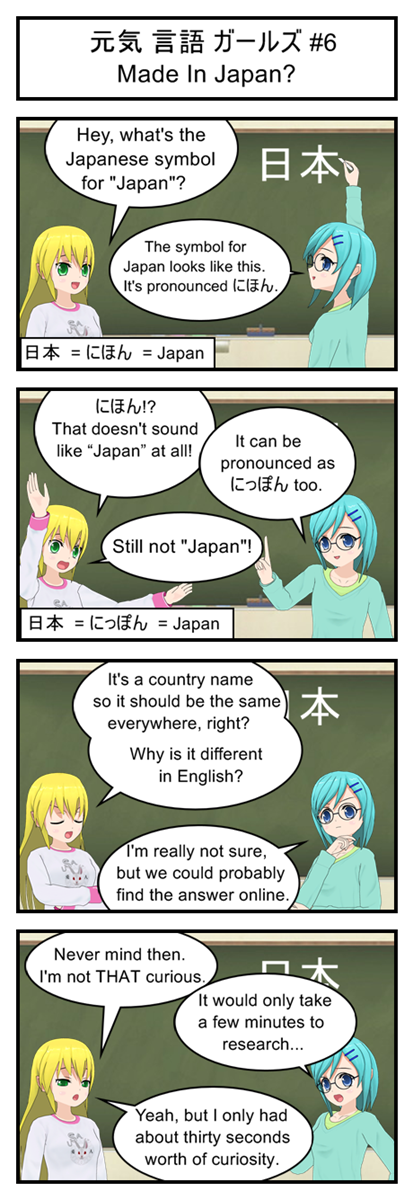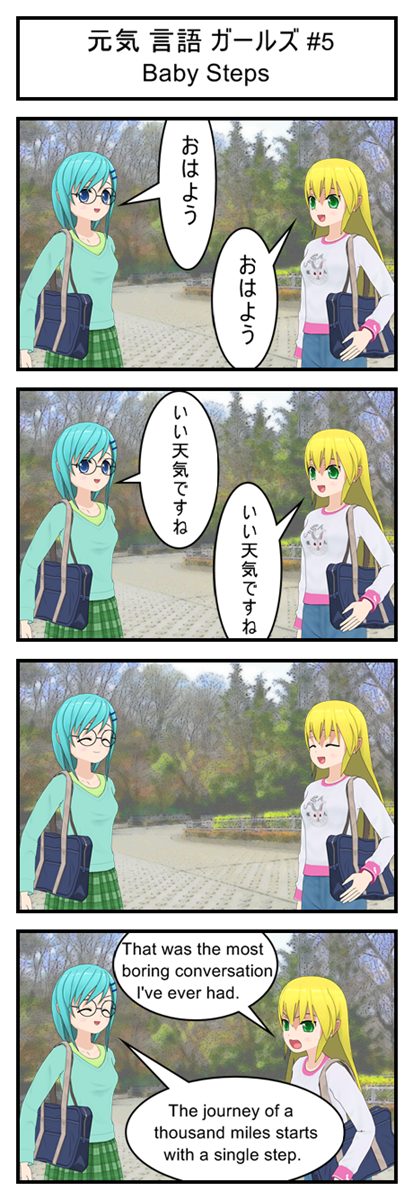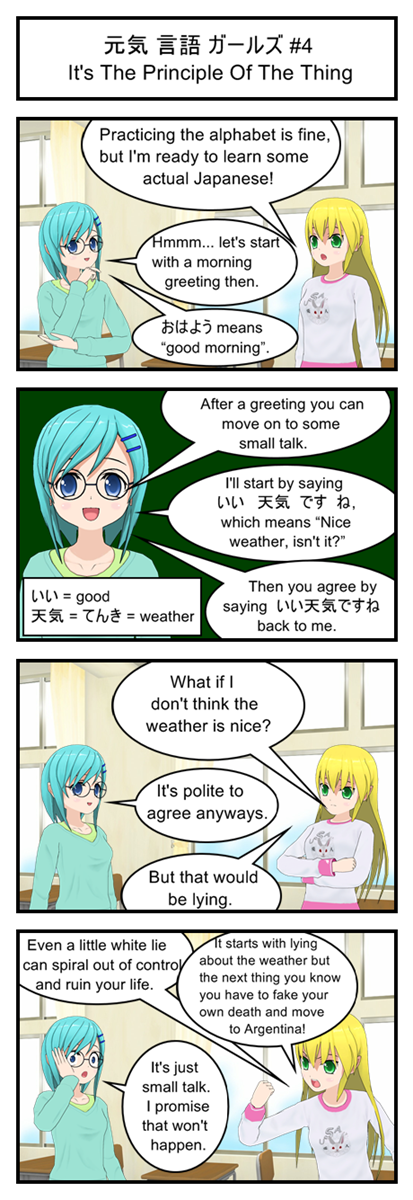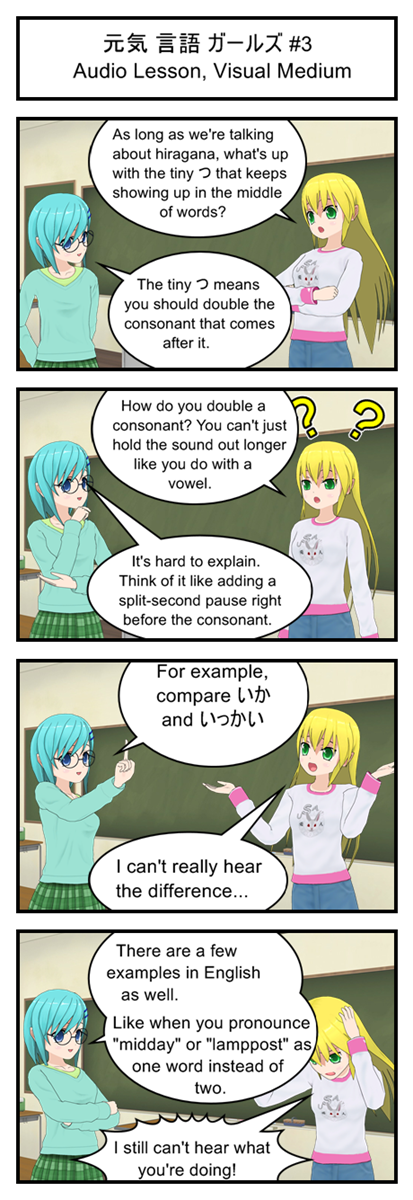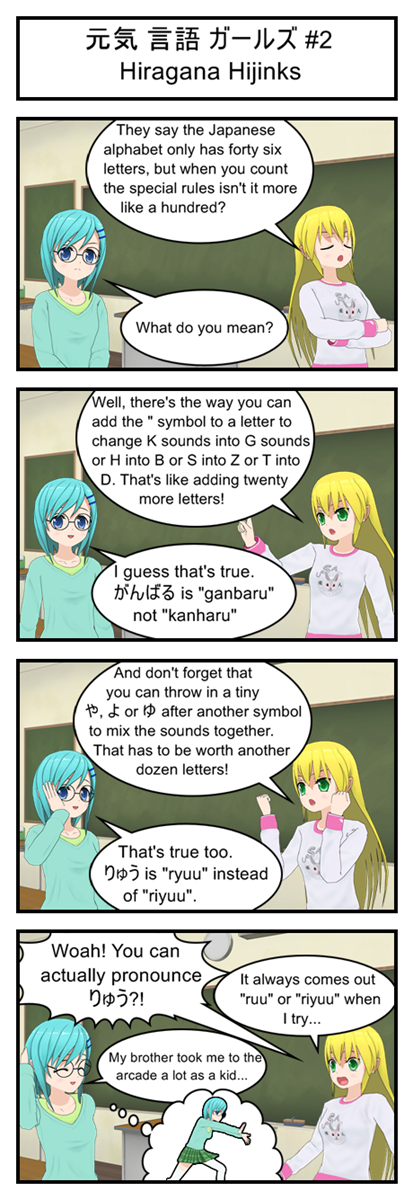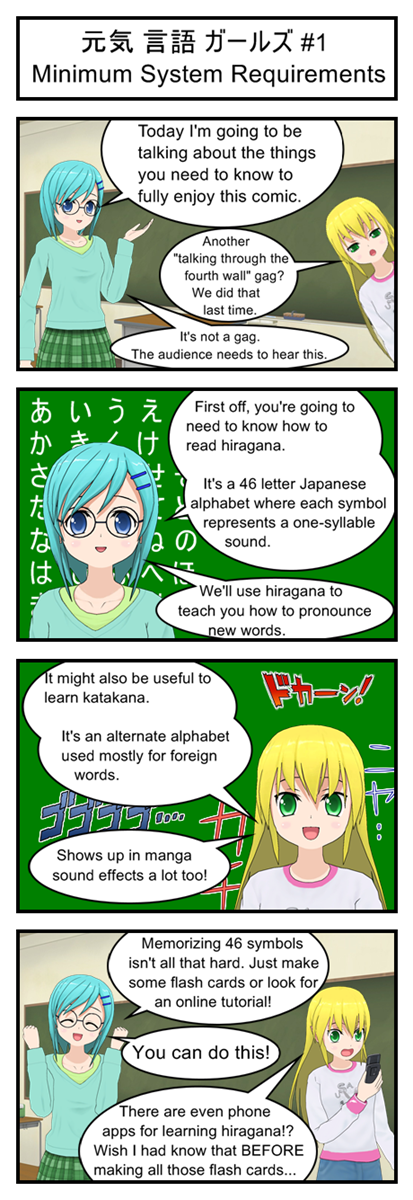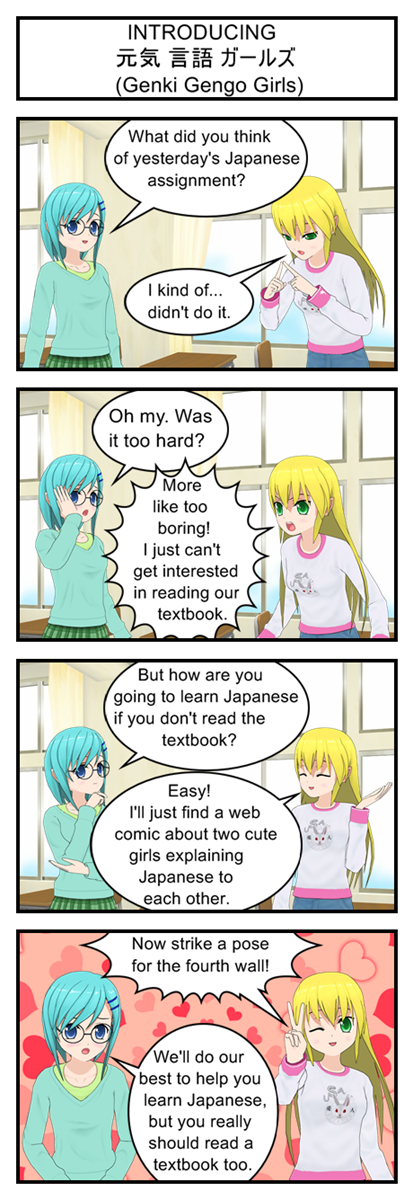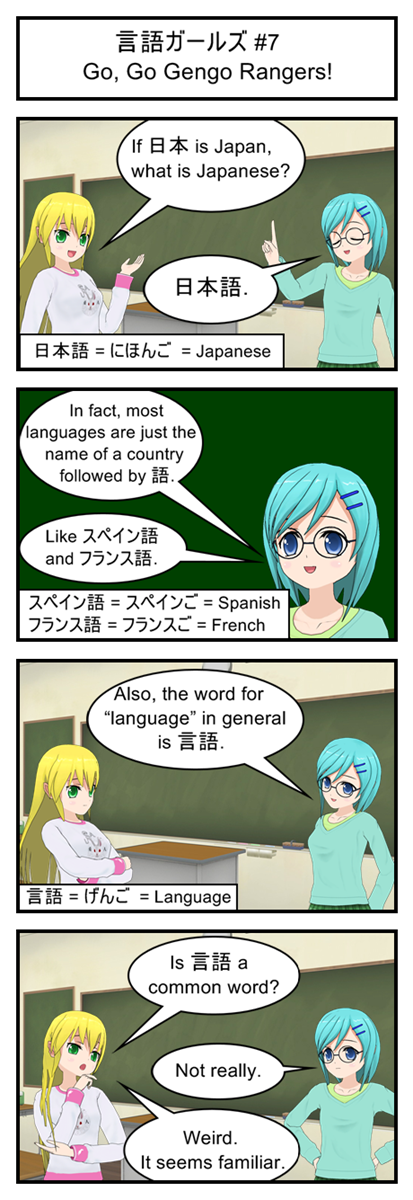
Here’s a comic to test how many of you actually went ahead an memorized the katakana along with the hiragana. You’ll be the ones who recognize スペイン as “supein” (Spain) and フランス as “furansu” (France).
Also, I’ve been thinking and it seems to me that “Genki Gengo Girls” is too long of a title to just roll of the tongue. So from now on this comic is just “Gengo Girls”. Much catchier, isn’t it? I’ll eventually get around to editing the first six strips with the new title.
Vocabulary
日本語 = にほんご = Japanese
スペイン語 = スペインご = Spanish
フランス語 = フランスご = French
言語 = げんご = Language
Transcript
Yellow: If 日本 is Japan, what is Japanese?
Blue: 日本語.
Blue: In fact, most languages are just the name of a country followed by 語.
Blue: Like スペイン語 and フランス語.
Blue: Also, the word for “language” in general is 言語.
Yellow: Is 言語 a common word?
Blue: Not really.
Yellow. Weird. It seems familiar.
